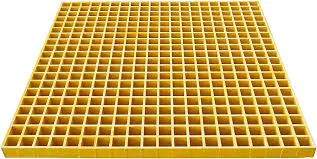
-
 Afrikaans
Afrikaans -
 Albanian
Albanian -
 Amharic
Amharic -
 Arabic
Arabic -
 Armenian
Armenian -
 Azerbaijani
Azerbaijani -
 Basque
Basque -
 Belarusian
Belarusian -
 Bengali
Bengali -
 Bosnian
Bosnian -
 Bulgarian
Bulgarian -
 Catalan
Catalan -
 Cebuano
Cebuano -
 China
China -
 China (Taiwan)
China (Taiwan) -
 Corsican
Corsican -
 Croatian
Croatian -
 Czech
Czech -
 Danish
Danish -
 Dutch
Dutch -
 English
English -
 Esperanto
Esperanto -
 Estonian
Estonian -
 Finnish
Finnish -
 French
French -
 Frisian
Frisian -
 Galician
Galician -
 Georgian
Georgian -
 German
German -
 Greek
Greek -
 Gujarati
Gujarati -
 Haitian Creole
Haitian Creole -
 hausa
hausa -
 hawaiian
hawaiian -
 Hebrew
Hebrew -
 Hindi
Hindi -
 Miao
Miao -
 Hungarian
Hungarian -
 Icelandic
Icelandic -
 igbo
igbo -
 Indonesian
Indonesian -
 irish
irish -
 Italian
Italian -
 Japanese
Japanese -
 Javanese
Javanese -
 Kannada
Kannada -
 kazakh
kazakh -
 Khmer
Khmer -
 Rwandese
Rwandese -
 Korean
Korean -
 Kurdish
Kurdish -
 Kyrgyz
Kyrgyz -
 Lao
Lao -
 Latin
Latin -
 Latvian
Latvian -
 Lithuanian
Lithuanian -
 Luxembourgish
Luxembourgish -
 Macedonian
Macedonian -
 Malgashi
Malgashi -
 Malay
Malay -
 Malayalam
Malayalam -
 Maltese
Maltese -
 Maori
Maori -
 Marathi
Marathi -
 Mongolian
Mongolian -
 Myanmar
Myanmar -
 Nepali
Nepali -
 Norwegian
Norwegian -
 Norwegian
Norwegian -
 Occitan
Occitan -
 Pashto
Pashto -
 Persian
Persian -
 Polish
Polish -
 Portuguese
Portuguese -
 Punjabi
Punjabi -
 Romanian
Romanian -
 Russian
Russian -
 Samoan
Samoan -
 Scottish Gaelic
Scottish Gaelic -
 Serbian
Serbian -
 Sesotho
Sesotho -
 Shona
Shona -
 Sindhi
Sindhi -
 Sinhala
Sinhala -
 Slovak
Slovak -
 Slovenian
Slovenian -
 Somali
Somali -
 Spanish
Spanish -
 Sundanese
Sundanese -
 Swahili
Swahili -
 Swedish
Swedish -
 Tagalog
Tagalog -
 Tajik
Tajik -
 Tamil
Tamil -
 Tatar
Tatar -
 Telugu
Telugu -
 Thai
Thai -
 Turkish
Turkish -
 Turkmen
Turkmen -
 Ukrainian
Ukrainian -
 Urdu
Urdu -
 Uighur
Uighur -
 Uzbek
Uzbek -
 Vietnamese
Vietnamese -
 Welsh
Welsh -
 Bantu
Bantu -
 Yiddish
Yiddish -
 Yoruba
Yoruba -
 Zulu
Zulu
grp dual lamination product
The Advantages and Applications of GRP Dual Lamination Products
In recent years, the realm of composite materials has expanded significantly, with glass reinforced plastic (GRP) becoming a fundamental component in various industries. Among the various innovations in this field, GRP dual lamination products have emerged as a popular choice due to their enhanced durability, versatility, and aesthetic appeal. This article delves into the specifics of GRP dual lamination, highlighting its advantages, applications, and future potential.
Understanding GRP Dual Lamination
GRP, or glass reinforced plastic, is a composite material made from a polymer matrix reinforced with glass fibers. The dual lamination process enhances the properties of traditional GRP by applying two layers of distinct materials, resulting in a product that boasts superior strength and resistance to environmental factors. Typically, the outer layer is a tough resin, while the inner layer might incorporate different resins or additives to improve functionality.
This innovative technique not only amplifies the mechanical properties of GRP but also offers additional benefits such as improved surface finish and increased resistance to chemical and UV exposure. As a result, GRP dual lamination products are not only robust but also retain their aesthetic quality over time.
Key Advantages of GRP Dual Lamination Products
1. Enhanced Durability The dual lamination process significantly increases the lifespan of GRP products. With two protective layers, they can withstand harsh environmental conditions, making them ideal for outdoor applications. This durability translates into lower maintenance costs and increased safety, particularly in critical sectors.
2. Lightweight Construction Despite their strength, GRP products exhibit a low weight-to-strength ratio. This characteristic is particularly advantageous in industries like aerospace and automotive, where reducing weight can significantly enhance efficiency and fuel economy.
3. Corrosion Resistance One of the standout features of GRP dual lamination products is their impressive resistance to corrosion. This property makes them suitable for use in aggressive environments, such as chemical processing plants and marine applications, where conventional materials might fail.
4. Aesthetic Flexibility The dual lamination process facilitates a variety of finishes, colors, and textures, allowing manufacturers to meet specific aesthetic requirements. Whether for architectural elements or consumer products, GRP offers extensive possibilities for customization.
grp dual lamination product

5. Ease of Fabrication GRP can be molded into complex shapes with relative ease. The dual lamination process further enhances this capability, enabling the production of intricate designs that would be challenging with traditional materials.
Applications Across Industries
The versatility of GRP dual lamination products makes them suitable for a wide range of applications
- Construction In the construction sector, GRP is often used for façade panels, roofing systems, and even structural elements. The combination of strength and aesthetic appeal makes it an attractive choice for modern architectural designs.
- Automotive and Aerospace The lightweight nature of GRP dual lamination is particularly beneficial in the automotive and aerospace industries, where minimizing weight is crucial for enhancing performance and fuel efficiency. Components like body panels, interiors, and structural parts frequently utilize this material.
- Marine The marine industry benefits from GRP’s resistance to water and corrosion. Boat hulls, decks, and other components made from GRP dual lamination can endure prolonged exposure to a saline environment.
- Electronics In the electronics field, GRP is often used for casings and housings due to its insulating properties and durability. With the added benefits of dual lamination, products can feature greater longevity and aesthetics.
Conclusion
GRP dual lamination products represent a significant advancement in composite materials, known for their strength, lightweight nature, and aesthetic flexibility. Their myriad applications across various industries underscore their importance in contemporary manufacturing and design. As technology continues to evolve, the potential for GRP products will likely expand further, paving the way for innovative solutions that meet the demands of an ever-changing market. Whether in construction, automotive, marine, or electronics, GRP dual lamination products are set to play a central role in the future of material science.









